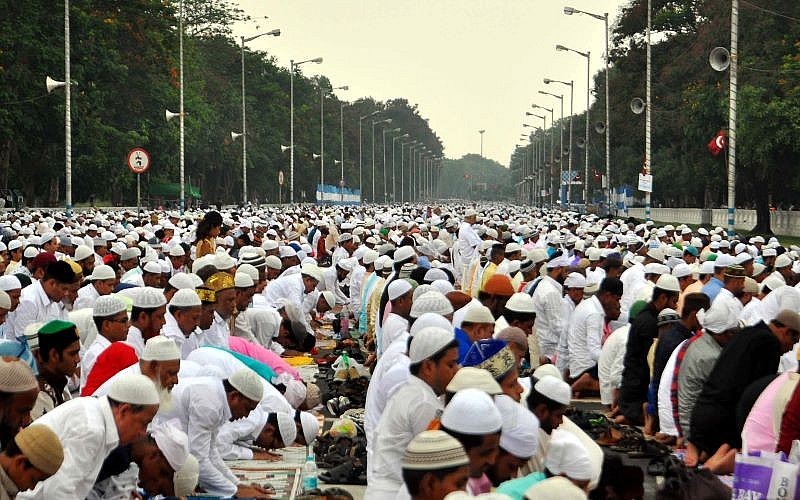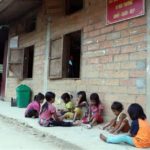The developmental plans in the minority-majority districts have been causing changes in 90 districts of India.
 |
| Photo Courtesy: UNI |
The minority communities in India, as identified under section 2 (c) of the National Commission for Minority Act, 1992, include Muslims, Sikhs, Christians, Buddhists, Parsis, and Jains. The ‘Multi-Sectoral Development Program for Minorities’ is the official name of this scheme.
The Union Ministry of Minority Affairs, Government of India oversees the implementation of this scheme.
The scheme holds a significant value for Muslims due to their high poverty rate in India.
While 53% of Dalit men are employed, only 48% of Muslims have jobs. Similarly, 23% of Dalit women are employed compared to only 9.6% of Muslim women.
According to the 2001 census, the literacy rate of the country is 64.80%, but among Muslims, it is only 59.10%.
The inadequate access to clean drinking water is also resulting in a higher average rate of illness among Muslims, as only 19% of their homes have plumbing.
The Government of India is committed to improving the situation as it is extremely serious.
The multi-sectoral development program has completed 14 years and is now showing positive outcomes in numerous districts. Out of the 90 districts identified under the Multisectoral Development Program, the majority of them are in Uttar Pradesh.
In this program, 21 districts have been identified in Uttar Pradesh, 13 in Assam, 12 in West Bengal, 7 each in Bihar and Arunachal Pradesh, 6 in Manipur, 4 each in Jharkhand and Maharashtra, 2 each in Haryana, Uttarakhand, Karnataka, and Mizoram, and 1 each in Delhi, Meghalaya, Andaman and Nicobar, and Orissa.
The scheme covers the states of Madhya Pradesh, Kerala, Sikkim, and Ladakh, along with 338 towns and 1228 blocks of class 1.
The scheme focuses on districts and towns with a minority population of 25% or more.
By including towns and blocks at the local level, the scheme ensures the coverage of minority areas even in states that are not listed in the district-level scheme. For example, Punjab and Rajasthan are not in the national list of 90 districts, but the scheme covers 26 towns in Punjab and 16 towns in Rajasthan based on the town list.
However, this does not mean that towns or blocks in districts are excluded. For instance, Uttar Pradesh has the highest number of 21 districts covered under the MCD scheme, and it also includes an additional 71 towns under the scheme.
The objective of the scheme is to improve infrastructure for education, skills development, health, sanitation, shelter, roads, drinking water, and create income opportunities for minorities. It is a joint effort between the Central and State governments.
The scheme not only fills the gaps in existing government schemes but also provides additional resources for minority welfare projects to expedite development in these areas.
In 2017, the Indian Institute of Public Administration conducted a detailed evaluation of the MCD scheme. Chapter 4 of the report highlights the impact of the scheme on education, health, and drinking water. The data confirms the positive changes in the daily lives of the minority population caused by improved water supply, access to healthcare facilities, and secondary education.
These improvements may seem trivial to some, but they have brought satisfaction to a large portion of the population in minority areas who have felt neglected for a long time. While not everyone has benefited, the MsDP has managed to address the frustration among a considerable section of people in minority-populated areas.
Muslims have three key needs: education, employment, and health. The budget allocation to the Ministry of Minority Welfare for the year 2022-23 is Rs. 50.50 crore, which is Rs 674 crore more than the previous budget.
The budget clearly aims to promote development in minority-populated areas. Minority Welfare Minister Mukhtar Abbas Naqvi described it as a budget that fosters confidence and development amid the Corona epidemic.
If dedicated social workers in all 90 selected districts work diligently, these districts can become examples for Muslims in India. It is hoped that the development in these 90 districts will inspire progress for minorities across the country.
Learning through heritage
NDO – Van Mieu (Temple of Literature) attracts a large number of student visitors every year, mainly for spiritual purposes. How do the young people who come to the Van Mieu in hopes of understanding and respecting the true value of the heritage make the most of their experience? A programme on studying though heritage has been initiated in some primary schools in Hanoi and the results look good.








